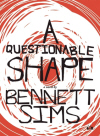A Questionable Shape
At last, someone has written a thinking man’s and woman’s book of zombies. Let’s stop here though; you just read the word “zombies,” which, consciously or not, paraded a reflex action of several split-second images across your mind from our collective Jungian zombie attic. Here’s what you probably saw: black-and-white film stills from campy 1960s B-movies, dozens of acting roles for those who can’t act, close-ups of blank-eyed crazies and legions walking as if they’d just overdosed on bath salts. After that trailer you concluded, not interested.
At last, someone has written a thinking man’s and woman’s book of zombies. Let’s stop here though; you just read the word “zombies,” which, consciously or not, paraded a reflex action of several split-second images across your mind from our collective Jungian zombie attic. Here’s what you probably saw: black-and-white film stills from campy 1960s B-movies, dozens of acting roles for those who can’t act, close-ups of blank-eyed crazies and legions walking as if they’d just overdosed on bath salts. After that trailer you concluded, not interested.
Don’t go away. Bennett Sims’s amazing new novel is about zombies the way Moby Dick is about whales. What we have in this book is the zombie as springboard to that rarefied air of higher planes of thinking. Before you wonder what the hell I’m talking about, let me introduce the book.
Hurricane season is looming in Baton Rouge. A zombie plague has broken out across the States and is still too new for scientists to isolate the cause. Matt Mazoch’s father has disappeared and is assumed to have joined the zombie ranks. He enlists the aid of his friend Vermaelen for one week to help search for his father. Known to return to significant haunts of their past, the zombies try to go home again. Thus the two friends search old locales dear to Mr. Mazoch, hoping to find him, though what they might do if they find him is not discussed. Matt doesn’t seem to have a plan, and Vermaelen is afraid to ask. His speculation begins to color a large portion of the book as he begins to wonder if Matt really wants to find his father. He begins to think that Matt might not want to “find Mr. Mazoch, but to never find Mr. Mazoch: to forever have this desideratum dangling just out of reach, leading him day after day deeper into the calendar, like his own Bethlehem star to follow.”
Meanwhile, the government has issued a safety pamphlet called FIGHT THE BITE (bites being the common transmission of the disease). As the undead are sighted, they are quarantined and kept on a barge outside of New Orleans. Matt and Vermaelen ponder the quality of life a zombie lives. Are they awake? Can they see? What thoughts do they have? No one knows, and the zombies aren’t saying.
During the weeklong search for Matt’s father, a metamorphosis of thought begins to unravel regarding the relationship between father and son. Mr. Mazoch’s zombiefication has prompted a review of his and Matt’s life together. Forgotten memories are recalled and various scenes are re-visited. Vermaelen and his girlfriend, Rachel, reevaluate their own relationship in light of the zombie plague. How would one react if the other were infected? What important sites would they visit if reanimated? (They exchange lists of landmark geography sites to search just in case.) Finally, the nagging question which hasn’t been uttered finally comes to the surface: what do you do with a loved one who has been reanimated? Read the book and find out.
This is a book of musings and ponderings of human relationships, so if you are looking for fast-paced zombie action, look elsewhere. Sims explores many offbeat tangents that you would never expect in a novel that features cameos with zombies. There is talk of “hypothetical thought-experimental monsters from mind-body philosophy.” There is mention of religion, recalling a radio talk show preacher proclaiming that “when there is no more room in hell, the dead will walk the earth.” Heidegger is even brought in with his theory of “Dasein,” literally “being there,” for his explanation of the understanding of objects for comprehending the average zombie. You don’t know whether to go into deep thinking or laugh. Or both. Remember, this is a thinking reader’s book of zombies.
As I understand it, Sims was a student of David Foster Wallace and caught the footnote virus from his mentor. I don’t mind, as my footnote-novel reading career began with Nicholson Baker’s The Mezzanine and continued onward through Wallace’s Infinite Jest. I am a vet and I found Sims’s footnotes well-planned and well-used. I eventually got into the rhythm of adjusting my eyesight.
I won’t spoil the ending for you except to say it reminded me of the final pages of Frankenstein. I’m talking about the book, not the movies, so don’t jump to conclusions. In fact both books are really about relationships and might make interesting companion readings. They address one of my favorite topics in literature, the role of the outsider in society—and really, who could be more of an outsider than a zombie and Dr. Frankenstein’s monster? I won’t go into the whole shebang of monster as metaphor, but this book might start your gears turning this way. This book will be lodged in my cranium for quite a while. Bennett Sims has embarked on a unique literary journey; join him now and fight the bite.





